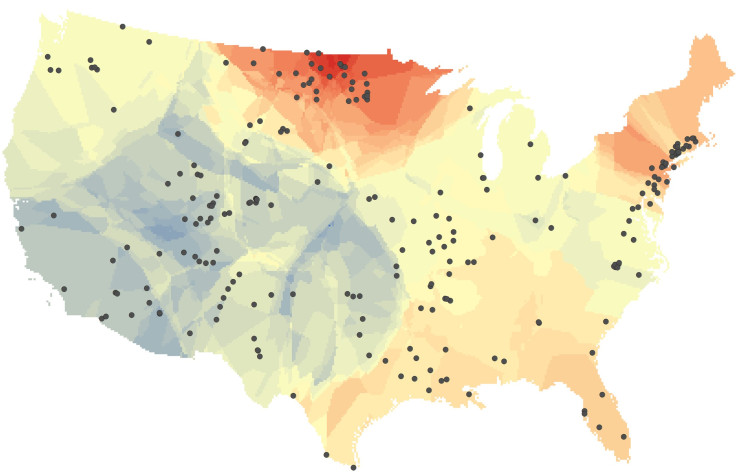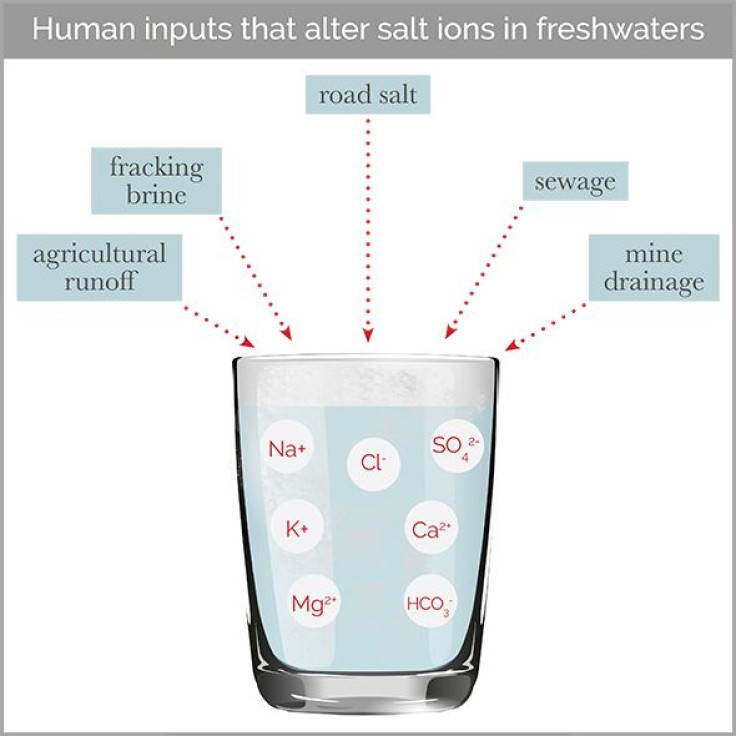Rivers, Streams Becoming Saltier, More Alkaline All Over North America
Human activities are causing the amount of salt in rivers and streams across North America to increase, and the increased salinity is also leading to a rise in the alkalinity of these waterways, according to a study published Monday. The change in freshwater could have big implications for drinking water supply, natural ecosystems, as well as urban infrastructure.
The study looked at the changing chemical profile of freshwater in the United States, using data collected over the last 50 years from 232 U.S. Geological Survey monitoring sites around the country. Some of the major rivers that showed significant chemical changes over the years are the Mississippi, Hudson, Potomac, Neuse, Canadian and Chattahoochee.
Data showed 37 percent of the drainage area in contiguous U.S. saw a large increase in salinity, while alkalinization went up by 90 percent. The increases, and their reasons, differed from region to region, and some regions also saw a reduction in salinity.

Titled Freshwater salinization syndrome on a continental scale, the study appeared online in the journal Proceedings of the National Academy of Sciences. The researchers who authored it were led by Sujay Kaushal from the University of Maryland.
“We created the name ‘Freshwater Salinization Syndrome’ because we realized it’s a suite of effects on water quality, with many different salt ions linked together. We didn’t know that before. Many people assume that when you apply salt to the landscape it just gets washed away and disappears. But salt accumulates in soils and groundwater and takes decades to get flushed out,” Kaushal explained in a statement Monday.
Salt here does not refer to just sodium chloride, or table salt that we use in food, as well as for deicing roads. The term in chemistry refers to “any combination of positively and negatively charged ions that dissociate in water.” And such salts reach waterways and seep into the ground from a number of human activities, such as fertilizers from agriculture, or even all the waste produced by humans. When more than one salt is present in an area, it can compound the toxic effects.

“Long-term monitoring is vital to understanding the pressures facing our nation’s freshwaters from increased salt loading, and for guiding strategies that protect drinking water. Road salt, irrigation runoff, and sewage are obvious culprits. But so is acid rain, which can release alkaline salts that compromise the chemical integrity of freshwaters,” study coauthor Gene E. Likens from the Cary Institute of Ecosystem Studies said in another statement.
An example of the tragedy that high salinity and alkalinity could lead to was seen in 2014, in Flint, Michigan, where the high salt content and chemical treatment of water from the Flint River caused lead in the water pipes to leach into the water.
“The trends we are seeing in the data all suggest that we need to consider the issue of salt pollution and begin to take it seriously. The Environmental Protection Agency does not regulate salts as primary contaminants in drinking water at the federal level, and there is inconsistency in managing salt pollution at the local level. These factors are something communities need to address to provide safe water now and for future generations,” Kaushal said.
© Copyright IBTimes 2024. All rights reserved.











